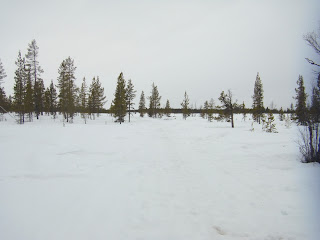Hello all KAIRA readers,
Juha Vierinen suggested that I contribute to the KAIRA blog, and I'm happy to do so. By way of introduction, I'm Phil Erickson, a radio science and space plasma physicist from MIT Haystack Observatory on the east coast of the US in Westford, MA. My activities include leading the team which operates the Millstone Hill large power-aperture ionospheric radar system, one of several large programs at Haystack. I'll describe more fully our various activities and science in a future post.
This week, though, I've been away from home doing some guest lecturing to an up and coming set of students. For several years now, a number of European universities have pooled their resources to offer a 2 year masters' degree program in space science and technology. The Erasmus Mundus Space Masters course covers a wide range of topics, with both engineering and science tracks as choices in the second year. As a frequent collaborator with the EISCAT ionospheric radar systems, the Space Masters program invited me to come and give several guest radar lectures as part of their first year core Radar and Optics unit.
I had the pleasure this year to work with nearly 50 interested students who asked great questions and managed to stay awake for all the material! To make it interesting, we spent an afternoon using a MIT IAP small radar system, a marvelous teaching tool and useful radar in its own right developed by Dr. Greg Charvat and Dr. Alan Fenn at MIT Lincoln Laboratory. This system is also known as the 'Cantenna' radar, for the distinct transmit and receive antennas on the front made from tin cans. Running on 8 AA batteries and using a combination of laptop sound cards and MATLAB for simple signal processing, the radar fits on a kitchen cutting board and is fully capable of both Doppler and range measurements out to a considerable distance. We however stuck to the first floor of the IRF classroom wing. Since the students see a lot of material describing large systems, it is always nice to demonstrate that the same principles apply whether the radar is small or big.
I ship the radar ahead of time to avoid packing it in my bags, but always build the antennas anew before each run. Normally, the antennas are containers holding the local ground coffee blend, but this year's students got an extra treat. A trip to the local Coop supermarket yielded two tins holding biscotti - "Cantuccini Skorpor" (appropriate first word; the second is simply "biscuit" in Swedish) - and so the class got to munch on them while we ran the system. You can see the transmitting antenna on the right and the receiving antenna on the left doing their work in our "Cantuccini" system in the photo below.
[Credit goes to Dr. Craig Heinselman, the EISCAT director, for suggesting the biscotti cans.]
(photo by Simon Delchambre)
The course is held at IRF, the Swedish Institute for Space Physics, up in northern Sweden. IRF is a very pleasant place to visit for both collaborations and for the beauty of the arctic landscape. Although spring is arriving and the temperatures are getting warmer, there is still a lot of snow on the ground in April for this New Englander! I do recognize the grey skies, though.
It was great fun as usual, and it was very nice to do my part in transmitting (sorry for the bad pun) radar fundamentals to a new generation of science and technical learners. Good luck to all in the future!




Hi, I have a query regarding the design of Low pass filter used in the design, why have you designed a low pass filter with 15 kHz bandwidth.?
ReplyDelete